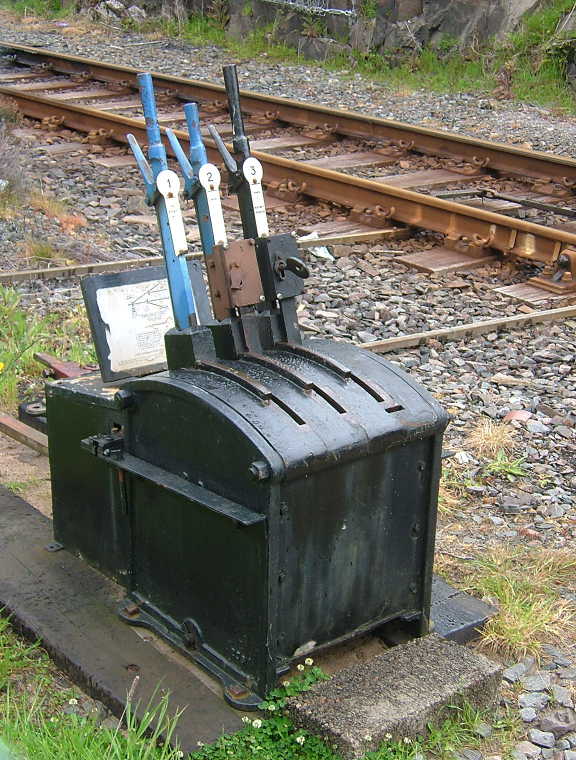Annett's Key on:
[Wikipedia]
[Google]
[Amazon]
 In British, Australian, French, and Swiss
In British, Australian, French, and Swiss
 In British, Australian, French, and Swiss
In British, Australian, French, and Swiss railway signalling
Railway signalling (), also called railroad signaling (), is a system used to control the movement of railway traffic. Trains move on fixed rails, making them uniquely susceptible to collision. This susceptibility is exacerbated by the enor ...
, an Annett's key is a form of trapped-key interlocking
Trapped-key interlocking utilizes locks and keys for sequential control of equipment and machinery to ensure safe operation. Trapped-key interlocks are widely used to ensure safe access to potentially live or dangerous plant or equipment in an ...
that locks levers
A lever is a simple machine consisting of a beam or rigid rod pivoted at a fixed hinge, or ''fulcrum''. A lever is a rigid body capable of rotating on a point on itself. On the basis of the locations of fulcrum, load and effort, the lever is divi ...
or other items of signalling apparatus, thereby serving as a portable form of interlocking
In railway signalling, an interlocking is an arrangement of signal apparatus that prevents conflicting movements through an arrangement of tracks such as junctions or crossings. The signalling appliances and tracks are sometimes collectively ...
. The purpose is to prevent access from sidings to the running line without authority. When not in use, the key is normally held in an Annett's lock that is fixed to the lever or concerned apparatus.
History
The Annett's key takes its name from its inventor, J. E. Annett of theLondon, Brighton and South Coast Railway
The London, Brighton and South Coast Railway (LB&SCR; known also as the Brighton line, the Brighton Railway or the Brighton) was a railway company in the United Kingdom from 1846 to 1922. Its territory formed a rough triangle, with London at its ...
. Annett patent
A patent is a type of intellectual property that gives its owner the legal right to exclude others from making, using, or selling an invention for a limited period of time in exchange for publishing an sufficiency of disclosure, enabling disclo ...
ed his design in 1875; in 1881 that patent was bought out by Saxby and Farmer.
Operation
In British usage, the key may be held in a locked container in the signal box that can only be opened when the corresponding signal lever is turned to ''danger'' for traffic on the running line; the lever is locked in position until the key is returned. Alternatively, the key may be attached to the train staff for the section of running line containing the entrance to the siding. At manually-worked level crossings remote from signal boxes the key to the gates can only be removed for use when the signals for the running line are locked at ''danger''. In Australian usage, the key is carried on a specified locomotive.See also
*Glossary of rail transport terms
Rail terminology is a form of technical terminology. The difference between the American term ''railroad'' and the international term ''railway'' (used by the International Union of Railways and English-speaking countries outside the United Sta ...
References
{{Reflist Interlocking systems